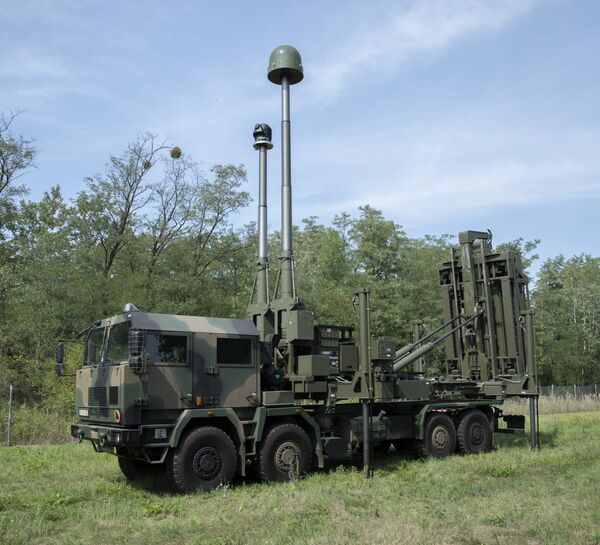
The first eight Jelcz T21 TS DOW 8×8 chassis for CAMM iLaunchers are expected to be ready by the end of 2022. (MBDA)
Polska Grupa Zbrojeniowa (PGZ) plans to develop new short-range air defence (SHORAD) and very short-range air defence (VSHORAD) capabilities. Sebastian Chwałek, president of PGZ's management board, and Colonel Michał Marciniak, the Ministry of National Defence's plenipotentiary for integrated air defence and deputy head of the Armaments Agency, presented the main goals for the development of multilayer air defence in Poland during a press briefing in Warsaw on 28 January.
Col Marciniak said it would be crucial to integrate systems being developed separately: Pilica VSHORAD, armed with Grom and Piorun missiles; Narew SHORAD, based on the Common Anti-Air Modular Missile (CAMM) family; and the Wisła medium-range air defence system with Patriot Advanced Capability (PAC-3) Missile Segment Enhancement (MSE) missiles. He explained that Polish air defences would be organised based oneffective range of effectors, not on the branches of the armed forces that operate the current system.
The Pilica will be developed to the Pilca 2+ standard. VSHORAD batteries have hitherto been mainly assigned to airbase defence. However, under the new concept, it could be used to defend Patriot batteries against aerial threats including unmanned aerial systems using both kinetic and non-kinetic weapons. Previously it had been planned to assign the Narew system to defend medium-range batteries. Pilica 2+ will be integrated with the Surface-to-Air Missile Centre (SAMOC) command system.
This means that the Polish Armed Forces will require new, improved effectors. During the briefing, PGZ revealed plans to develop missile capabilities based on both the company's know-how and technology transfer from MBDA, Lockheed Martin, and Raytheon under the offset agreements for Narew, Wisła, and Miecznik, the future Polish Navy frigate.
Looking to read the full article?
Gain unlimited access to Janes news and more...







